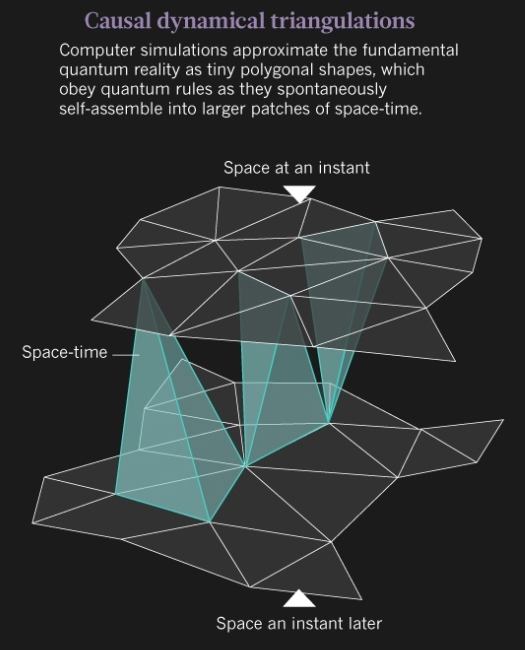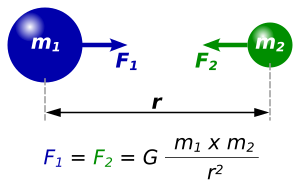Write4U
Valued Senior Member
This is derived from Asexperia's thread on "Philochrony" which discusses the properties of Time,
whereas CDT proposes a new look at the "unfolding properties of space"
Causal Dynamical Triangulation (CDT)
 Physics portal
Physics portal
whereas CDT proposes a new look at the "unfolding properties of space"
Causal Dynamical Triangulation (CDT)
Causal dynamical triangulation (abbreviated as CDT) theorized by Renate Loll, Jan Ambjørn and Jerzy Jurkiewicz, is an approach to quantum gravity that, like loop quantum gravity, is background independent.
This means that it does not assume any pre-existing arena (dimensional space), but rather attempts to show how the spacetime fabric itself evolves.
IntroductionThere is evidence [1] that at large scales CDT approximates the familiar 4-dimensional spacetime, but shows spacetime to be 2-dimensional near the Planck scale, and reveals a fractal structure on slices of constant time. These interesting results agree with the findings of Lauscher and Reuter, who use an approach called Quantum Einstein Gravity, and with other recent theoretical work.
Near the Planck scale, the structure of spacetime itself is supposed to be constantly changing due to quantum fluctuations and topological fluctuations. CDT theory uses a triangulation process which varies dynamically and follows deterministic rules, to map out how this can evolve into dimensional spaces similar to that of our universe.
The results of researchers suggest that this is a good way to model the early universe, and describe its evolution. Using a structure called a simplex, it divides spacetime into tiny triangular sections. A simplex is the multidimensional analogue of a triangle [2-simplex]; a 3-simplex is usually called a tetrahedron, while the 4-simplex, which is the basic building block in this theory, is also known as the pentachoron. Each simplex is geometrically flat, but simplices can be "glued" together in a variety of ways to create curved spacetimes, where previous attempts at triangulation of quantum spaces have produced jumbled universes with far too many dimensions, or minimal universes with too few.
See alsoCDT avoids this problem by allowing only those configurations in which the timelines of all joined edges of simplices agree.
 Physics portal
Physics portal- Asymptotic safety in quantum gravity
- Causal sets
- Fractal cosmology
- Loop quantum gravity
- 5-cell
- Planck scale
- Quantum gravity
- Regge calculus
- Simplex
- Simplicial manifold
- Spin foam
Last edited:



